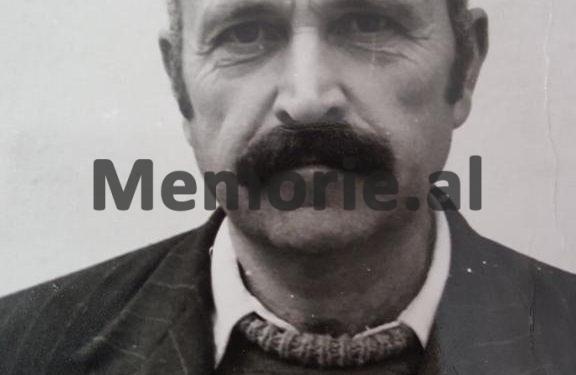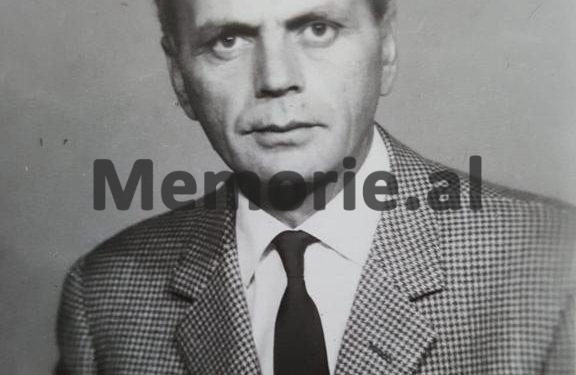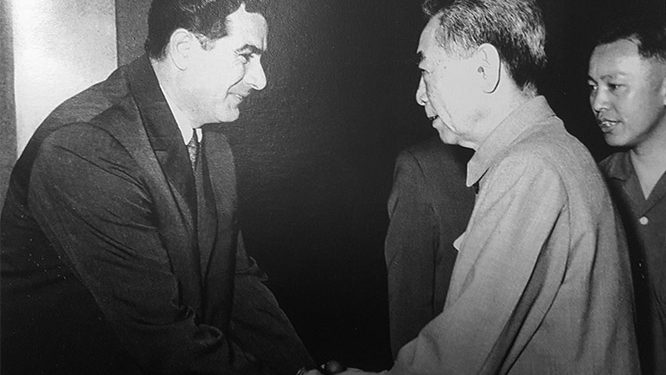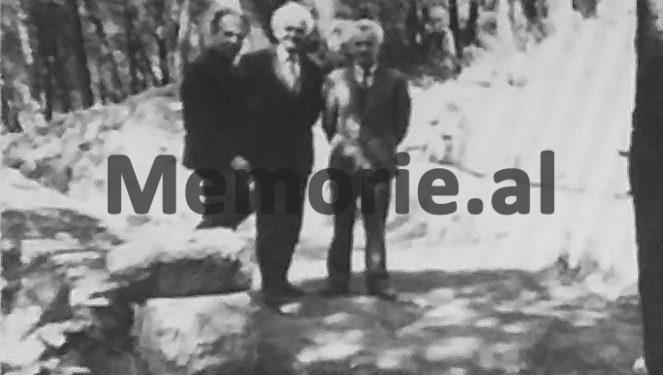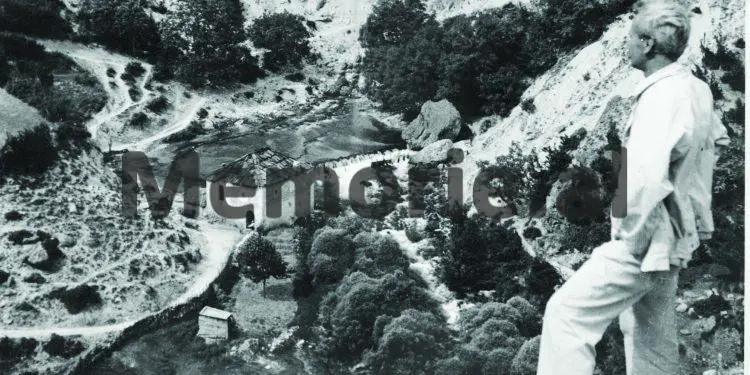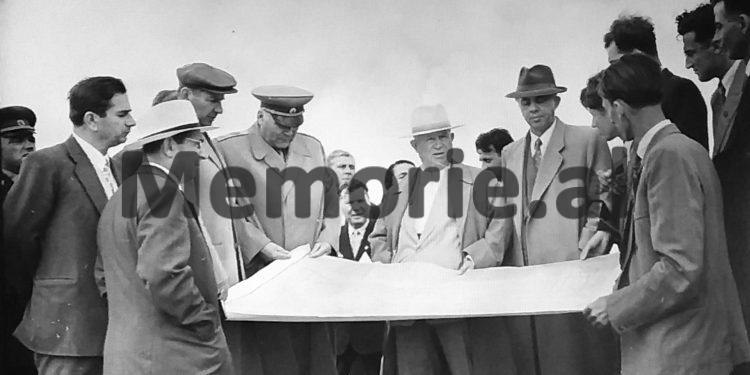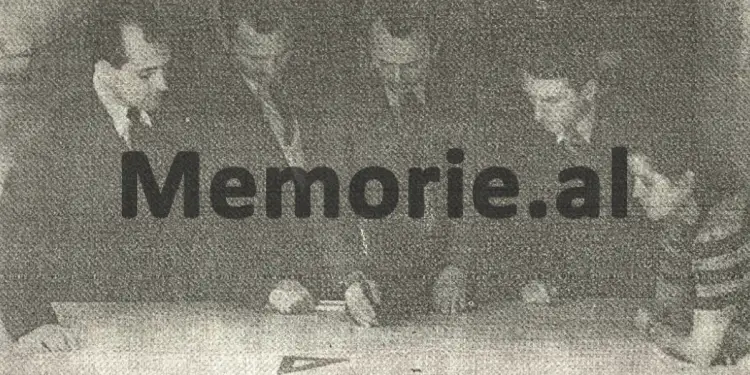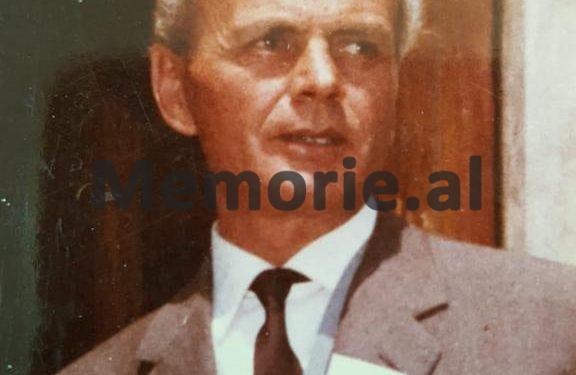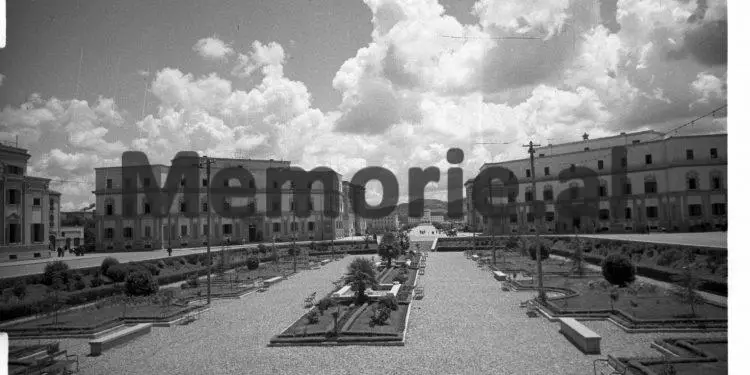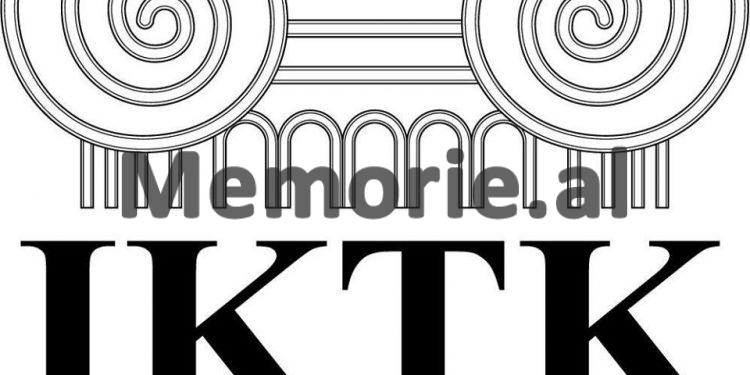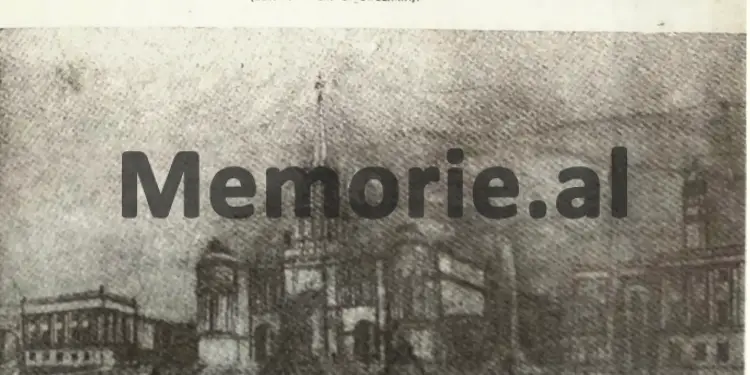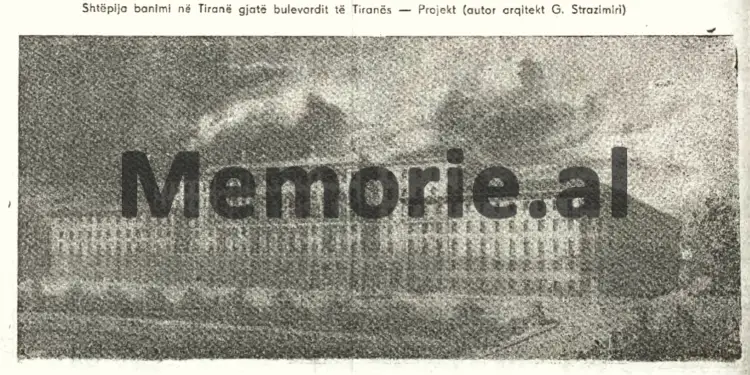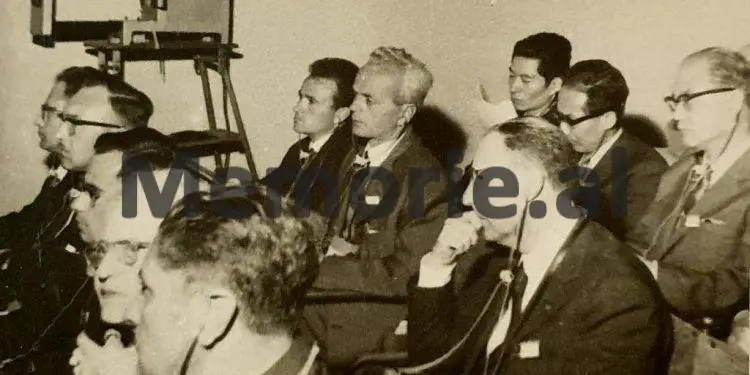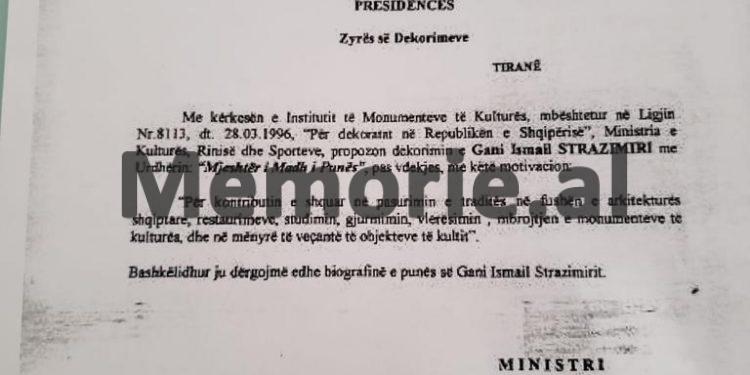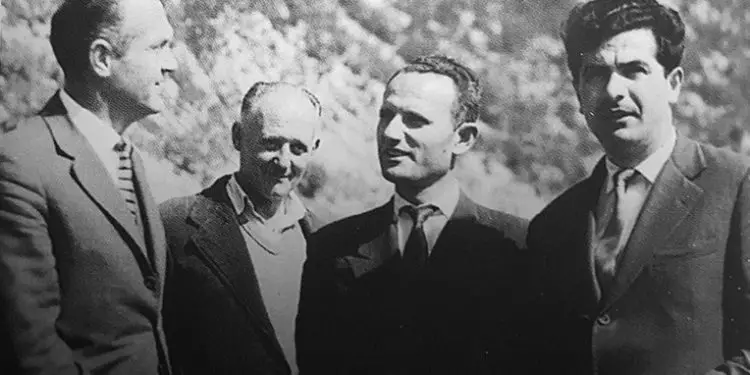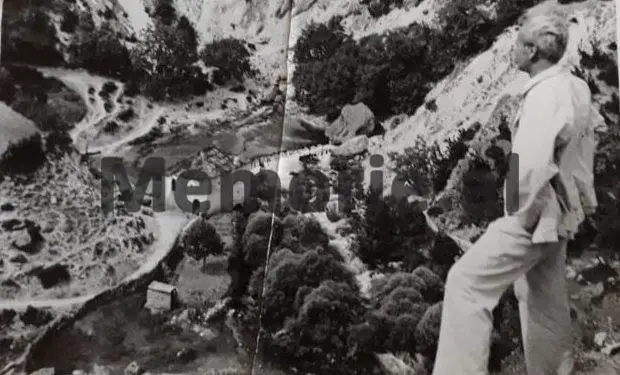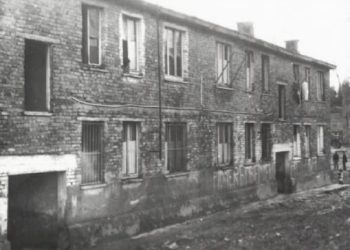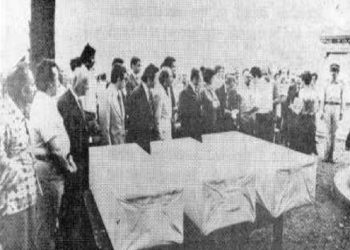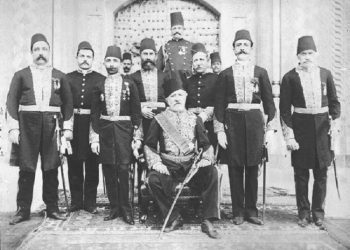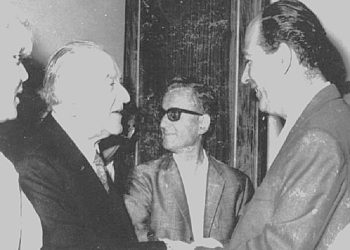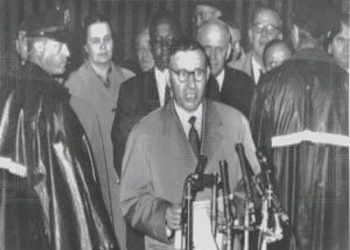Dashnor Kaloçi
Memorie.al publishes the unknown story of the architect Gani Strazimir, originally from the district of Dibra, who during the period of the Zog Monarchy studied at the Polytechnic University of Turin in the branch of Architecture, but interrupted his studies and returned home to engaged in the Anti-Fascist Movement, first with the guerrilla units of Tirana and then in the district of Dibra, where their house was one of the largest bases of the War and his father, Ismail Strazimiri, was killed by the Germans who bombed their house. with artillery. Gani was sent to study in the Soviet Union shortly after the end of the war and graduated in 1950 at the Faculty of Civil Engineering in Moscow, majoring in Architecture, and returned to Tirana, being appointed chief architect of the Urban Planning Office, where he deals with the regulatory plan of the capital, which he had started during his studies in Moscow, where he had the consultancy of two well-known Russian architects, Kratjuk and Polyakov, who also came to Tirana to study the terrain closely. Strazimir’s clash then with Russian specialists over where the Grand Palace of Culture would be built, and his subsequent withdrawal from that job, moving on to the Institute of Cultural Monuments, which he founded himself, and the clash with the party and state authorities, up to the highest ranks, such as that with Prime Minister Mehmet Shehu, for the demolition of Bezistan of Shkodra, or the Church of St. Mary, where he made the denunciations to the Prosecutor’s Office, considering them serious crimes to be punished. prosecuted.
Continued from the previous issue
At the head of the Institute of Cultural Monuments
After withdrawing from the Tirana Urban Office, Ganiu began to open a new path, that of discovering, preserving, and restoring material culture. This group created by him depended on the Institute of History under the University of Tirana. This new position allowed him to create, through surveys, drawings, photographs, etc., the archival base of cultural monuments of the Albanian people. Five years later, in 1965, at his suggestion, the Institute for the Preservation and Restoration of Cultural Monuments was established, where he was its first director. Ark. Gani Strazimiri is the founder of the Institute of Cultural Monuments and the “engine” of professional training of many specialists, such as Alexander Meksi, Emin Riza, Pirro Thomo, Apollon Baçe, Gjerak Karaiskaj, Valter Shtylla, Buron Kaceli, etc., who from that time onwards, they would make a great name not only in the field in which they specialized. Gani Strazimiri was engaged and worked hard in the field of the history of Albanian architecture and especially for the determination of the historical areas of folk architecture. He zoned the museum city of Berat and its special regulation (1961) as well as the same for the city of Gjirokastra in 1973. These are considered the greatest works of scientific research for the respect of historical areas of Albanian folk architecture. Likewise, the identification and subsequent preservation and restoration of monumental values became the primary objective in the work of that institute headed by Gani Strazimiri. In this context, he established restoration workshops in the main cities of the country, as well as the establishment of a system of caregivers, everywhere in all the villages of Albania where there were cultural monuments that were under the protection of the state. In 1964, Architect Gani Strazimiri together withing. Alexander Meksin attended the Venice Congress in Italy, and as the representative of Albania, Ganiu was elected a member of the Assembly for the approval of the Venice Restoration Charter.
Fierce war with the party and state authorities for the protection of monuments
Regarding the great work done by architect Gani Strazimiri during all that time he was in charge of the Institute of Cultural Monuments, among other things, his former collaborators and subordinates speak with great consideration and veneration. One of them is Professor Emin Riza, who, among other things, says: “Under the direction of Gani Strazimir, together with collaborators, we drafted the first text of the History of Art of Albanian Architecture and this was entered as a subject at the Faculty of Architecture. According to his friend and collaborator, architect Koço Miho, the idea of architect Gani Strazimir to define “yellow lines” for the separation of cities from rural areas, as well as the definition of industrialized areas, was a major concept. for the time”. Also in the memory of his former subordinates at the Institute of Monuments, the daily clashes of director Strazimiri, with the party and state authorities of that time, for the protection of cultural monuments, remained unforgettable. This was greatly exacerbated after 1965 when the communist regime began the fight against religious beliefs and launched a major crackdown on cult buildings, most of which were cultural monuments and cultural heritage treasures. the Albanian people. It is worth mentioning the vandalism of the communist regime against some rare and unique objects of cultural heritage in Albania, such as Church of St. Mary, in Qyrsaq of Vau i Dejës in Shkodra Region, Bezistani (Old Bazaar) at the entrance of the city of Shkodra near the shores of Buna and the lake, Hammam, etc., which were completely destroyed. This irritated Gani Strazimir immensely and he used all his powers and opportunities, denouncing to the Prosecutor’s Office and suing the state authorities who had committed that “criminal act” as he described it but despite his extraordinary efforts. , many irreversible monuments were completely destroyed.
Clashes with Mehmet Shehu for the Bezisten of Shkodra
It is worth mentioning the civic courage of Gani Strazimir in the protection of cultural monuments by clashing with the main leaders of the communist regime of that time, such as Prime Minister Mehmet Shehu. In this regard, in his memoirs, Sul Baholli, the first secretary of the Party Committee for the Shkodra district, among other things, writes arch. Gani Strazimiri, who intervened strongly and Mehmeti, was convinced and told him: ‘Gani won, Bezistan and‘ Old Bazaar ’will not be ruined. The next day we went to Koplik and I was stunned, as Mehmeti said to me: What are you, Sulë, that you are on the verge of death ?! I told him, “You just listened to the engineer, not us.” After some thought, he said to me: ‘Break it tonight for the whole night, that when Ganiu learns it tomorrow, he will have nothing to do. ‘ We broke the night and the next day Ganiu prepared the documents to denounce to the prosecutor Bilal Parruca who was the Chairman of the Executive Committee of Shkodra. We informed the Prime Minister Mehmet Shehu, who called him and said: ‘Gani, I am sorry for the monuments, but you will also put the Chairman of the Committee in prison’ ?! Gani replied, “This is the law we have made together. If you do not want the mayor to go to jail, change the law. “Before the law, we are all the same.”
Aleksandër Meksi: Ganiu intervened in Thoma Deljana
In addition to the vandalism that took place with some rare monuments in the Shkodra region, there were also those with the Kavaja mosque, for which, Prof. Dr. Aleksandër Meksi, recalls that: “As soon as that thing was learned, director Strazimiri urgently sent us to that city, but we could not do anything, because with that” work “was taken himself (comrade Rita Marko), the Secretary of First seen by the Party Committee of the Durrës district, on which the city of Kavaja depended at the time. According to Prof. dr. Meksit, one of Strazimir’s closest and closest friends at the same time, did an extraordinary job of minimizing the list of cult objects that were planned to be demolished, debating with the Minister of Education and Culture, Thoma Deljana, (at the meeting of the collegium of that ministry) and for that he had the help of the President of the League of Writers and Artists of that time, Dhimitër Shuteriqi. Minister Deljana obeyed their reasoning and thus managed to save a series of monuments with rare architectural values, such as the Et’hem Bey Mosque in the center of Tirana, the tomb of the Qorehasans near the “Sami Frashëri” gymnasium, the “Mosque” of the Singles ”, in Berat and many, many others. “In the flame against religious customs, a working group was created or more precisely a commission attached to the Ministry of Education and Culture headed by Thoma Deljana, who would deal with the review of the list of cultural monuments. Koço Bihiku was appointed chairman of that commission, while the members were: Aleks Buda, Gani Strazimir, Dhorka Dhamo, and me (Aleksandër Meksi). It was about removing from the list of many cultural monuments. Before we went to the ministry, we sat down with Gani and Emin Riza and Pirro Thomon, we discussed it. It was decided that everything was saved and during the meeting, we pretended to quarrel with Gani, not this monument, not this other one, and so we escaped as much as we could “, remembers prof. Alexander Meksi, at a time when he and his boss, Gani Strazimiri, and several other colleagues were making every effort to save many cultural heritage sites from destruction.
Neritan Ceka: “For the Korça Bazaar, Enver was told: talk to Gani”
Regarding the colossal work of Gani Strazimir in the protection of cultural heritage monuments, Prof. Dr. Neritan Ceka, among other things, testifies: “In the late ’60s, when work had just begun on the restoration of cultural monuments in the cities of Berat, Gjirokastra, and Kruja, during a visit made by Enver Hoxha in the district of Korca, they of the Party Committee were told that they wanted to demolish the ‘Old Bazaar’ in the center of the city, and Enver replied firmly: ‘For these things, you should only ask Gani Strazimir, what Ganiu will do to you’. And so it survived without being destroyed not only by the ‘Old Bazaar’ of Korça but by Gani Strazimir, today we have Gjirokastra, Berat, Kruja, etc., where there are dozens of cultural monuments that were taken under state protection, only thanks to Gani Strazimir’s insistence and intervention ”.
In 1968, with the withdrawal of Albania from the Warsaw Pact throughout the country, the works of military fortifications began, among other things. In the premises of the Apollonia Archaeological Park, it was planned to install and install an anti-aircraft battery, along with the corresponding radar, without forgetting the soldiers’ silo, canteen, and other annexes for a military unit. The strong intervention of the director of the Institute of Cultural Monuments, Gani Strazimiri, after clashes with the Commander of the Fier Corps, raised the issue to the highest party-state bodies, and everything was canceled. This speaks to the weight of the Institute of Cultural Monuments of that time and the authority of its director, Gani Strazimir, who with intellectual and civic courage, jealously defended every cultural monument. He also defended the ancient city of Butrint, Bylys Park, which together with that of Apollonia, thanks to the insistence and intervention of Gani Strazimir to the Politburo and the Defense Council, to this day have no center. fire or other military objects in their territories.
Debate with Fadil Paçrami, for the Et’hem Bey Mosque
Regarding the clashes between Gani Strazimir and the high party and state authorities in defense of cultural monuments, the former collaborator and his friend, Prof. Dr. Emin Riza, recalls “We were walking with Gani to go to the Library of the Palace of Culture, and where the Et’hem Bey mosque is, we were greeted by the Party Secretary of the Tirana district, Fadil Paçrami, and after the occasional greeting, he greeted us. He said, “Eat for a couple of days and we will break this plague,” and he showed us the mosque. But Gani told him bluntly: “Neither you nor God can ruin this.” He came back and I learned that he had met Hysni Kapo who probably talked to Enver Hoxha and so the mosque survived and we have it to this day only thanks to Gani Strazimir. Also, he took me with him one day, and on the way to Berat, he told me: that today you will see how the cultural monuments are protected. We arrived at the Party Committee and went directly to Pirro Gusho, the Party Secretary of the district, and after greetings, Pirro told him: Gani asked, “What are you doing, Pyrrhus here?” “I am the party secretary of the district,” was the response. Ganiu continued, ‘You know, that I am the First Secretary of Cultural Monuments’ ?! Thanks to this intervention, we have the ‘Mosque of the Singles’, to this day. But he did not always manage to save the monuments. I remember that Kavaja had two mosques. One older and smaller, but full of floral frescoes, and the other new, but not in the quality of the first. At the Institute came the announcement that both would be demolished. Ganiu hurried to Durrës to meet with Rita Marko, a member of the Politburo and Party Secretary for the Durrës district. He bluntly said, ‘Gani, we will demolish both mosques. Break the noses of the Kavajas. ‘ Despite Gani’s efforts, the ‘New Mosque’ was saved and for the old, the most beautiful, it took 24 hours of permission and the employees of the Institute photographed and documented everything. ”
“It is worth mentioning,” says Prof. Dr. Emin Riza ‘the support and assistance he gave to the employees of the Institute, for every problem or family problem that they had even outside the work of that institution. I remember that when my father, Selman Riza, was sent to Berat, they also informed me that my file had been sent to Kukës. In those days, Ganiu met with Manush Myftiyn, a member of the Politburo and First Secretary of the Tirana District Party Committee, and demanded that my file be returned and that I continue working at the Institute. After receiving the word that the file would be returned, he asked me to go to Italy, for an 8-month specialization. Manushi said: “Comrade Gani, let’s not exaggerate, now you have saved him from Kukes and you will immediately send him to Rome” ?!
In 1976, he retired
In 1976, renowned architect Gani Strazimiri retired and senior executives left him a small office on the premises of the Institute, where he would continue his research work with projects he had started long ago. Sometime later, he published an album (catalog) dedicated to the museum city of Berat. In the years that followed, he withdrew slowly from his work and study projects, as he increasingly encountered the great indifference of the relevant party and state institutions, which, due to the extremely difficult economic situation he was facing the place passed, they had almost completely diverted attention from the cultural monuments and objects that constituted the great wealth of cultural heritage. Gani Strazimiri passed away on May 3, 1993, in Turin, Italy, after a serious illness that affected the last years of his life. In 1998, the former Minister of Culture, Youth and Sports of that time, Edi Rama, at the request of the Institute of Cultural Monuments, who appreciated the work and great contribution of the famous architect, Gani Strazimiri, on July 23, 1998, proposed to the Presidency for the decoration of Gani Strazimir with the title “Grand Master of Work” (see the relevant facsimile), which was granted to him by the Presidency.
The reaction for the removal of the name “Gani Strazimir”, Institute of Monuments
Likewise, with the proposal of his former collaborators, Prof. Dr. Emin Riza, Prof. Dr. Alexander Meksi, Prof. Dr. Pirro Thomo, Prof. Dr. Apollon Baçe, etc., the government of the Democratic Party of Prime Minister Sali Berisha (see the relevant facsimile) gave the name ark. Gani Strazimiri, of the Institute of Cultural Monuments, but for two years the current government (of Prime Minister Edi Rama) merged the Institute of Monuments as part of the Archaeological Center, thus “losing” the name of the creator of the Institute of Defense and Restoration. of Cultural Monuments. Among other things, the well-known intellectual Piro Thomo (former collaborator of Gani Strazimir) reacted to this, through a letter, where he writes:
Ladies and Gentlemen, Minister and Director,
Two words and for the new logo of the Institute.
A year and a half ago, a competition was opened to formulate the logo of the Institute (along with the winning prize), which you surprisingly canceled.
However, I managed to send two variants, which I sent you along with the relevant argument.
I see that the published logo is the same as the idea I presented, but that still retains an inaccurate capital form, which does not honor the Institute.
Regarding the name of the founder of the Institute, Gani Strazimiri, this name has been given to this Institute with a V.K.M. I think the removal of the name cannot be done arbitrarily, but it will take another V.K.M. to cancel it ”.
Sincerely
Pirro Thomo
But what the state and the current government are not able to do, a group of his former collaborators have undertaken, who on their own initiative will make a bronze bust for architect Gani Strazimir and will ask the state authorities for permission for them. put before the Institute of Cultural Monuments, as the history of that institution is based on his work and major work. “The memory of the peoples never dies and everyone is honored with their work”./Memorie.al




